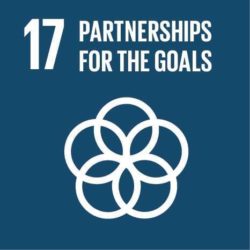
How Partnerships Can Change the World

Successfully reaching the purpose of the sustainable development goals and in turn making a better world will require action from all countries on the planet.
Of course this is not expecting that each country will be operating like a separate island or planet, disconnected from its fellow members of humanity.
Cooperation, in fact, is a huge part of achieving the SDGs and partnerships between countries will definitely be needed if we want to achieve the goals by the set 2030 end date.
What might that cooperation look like?
First off let’s look at something that is both universally needed and universally shared: water. Our planet has an abundance of this element but only a limited amount that can be used for our needed consumption.
And, as I’m sure you know, when the potable water dies out we will swiftly follow.
Already areas of the world are suffering from devastating water shortages and the effects are devastating. Water scarcity affects over 844 million people and this lack of access to clean water negatively impacts their health, food and communities.
Even worse are the water wars. History has shown that we are willing to kill each other to gain access to water (see: ancient Assyria, Caesar vs. the Gauls, India, China, New York, Trinidad, etc.) and these wars are only going to increase (in both scope and damage) as our access to fresh water shrinks.
This is apparent in Africa and Asia, where water has been and is seen as a major source of conflict.
Across the globe people and institutions are stepping up to find solutions to the water crises.
Here in Canada the Rainmaker Enterprise launched Water for Peace to bring together great minds to tackle the problem and raise funds for the cause. This initiative and partnership serves as an example of what we can do to limit the damage before it’s too late.
Another great example is the GloFouling Partnerships project. With 12 countries participating and five (including Canada) serving as strategic partners this initiative has real potential to protect marine biodiversity and keep our waters clean.
Major issues need major attention and these partnerships serve as an example of why they are powerful and needed.
Another important type of partnership is one that involves our countries as this, in fact, can prove to be a great way to both share the wealth and responsibility.
Spotlight Initiative serves as a great example of what this partnership could achieve. A collaboration of the EU and the UN, the Initiative’s goal is to help reach SDG 5 and “Achieve gender equality and empower all women and girls”.
Focusing on the very important issue of violence against women, this needed partnership will provide investments to improve the lives of girls and women living in Africa, Asia, the Caribbean, Latin America and the Pacific. By partnering and creating Spotlight Initiative all the power and resources held by these world leaders can be combined and used for the greater good.
The World Bank is also aiming to use partnerships to create a sustainable future, partnering with various countries to help end extreme poverty. Through its Country Partnership Framework (CPF) and Systematic Country Diagnostic (SCD) the World Bank plans to create a more equal economic world and help billions of people reach their potential.
So many of our problems require a lot of manpower to make a significant impact and it’s great to see that countries are recognizing the power that exists in cooperation.
Another way to ensure there is cooperation and partnership is to ensure we have universal systems set up to gather and analyze data. After all, the information collected needs to be consistent and readable straight across the globe.
Work is being done in this area. Google, UN Environment and the European Commission, for example, set up a partnership to develop data products that will help humanity better manage its water supply.
The UN also developed an indicator framework to be used to help countries manage the logistics of pursuing and achieving sustainability.
As long as countries work within this framework and provide the needed data we can move towards our goal of a better planet.
The Sustainable Development Solutions Network (SDSN) is a fantastic resource for anyone seeking more information on what we have done and where we need to go from here.
If you haven’t yet started exploring what you can do to help that might be a good place to start.
The reality is that the end point for the 2030 Agenda isn’t really that far away.
Achieving these goals are incredibly important if we want to leave the world in a better place. We owe it to our children (and their children) to not destroy the future.
As no man is an island (nor would you want to be as then you’d be at risk of rising waters) we need to work together to solve this crisis. Sustainable Development Goal 17, partnerships for the goals, knows this and is there to remind us that achieving the goals will take all of us.

